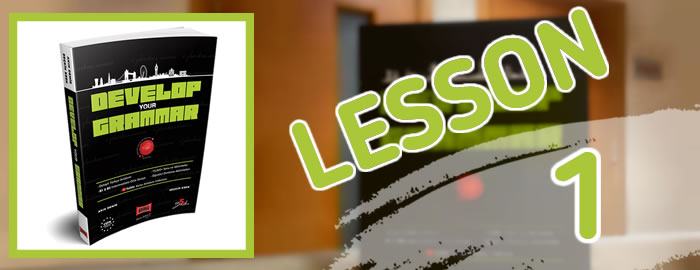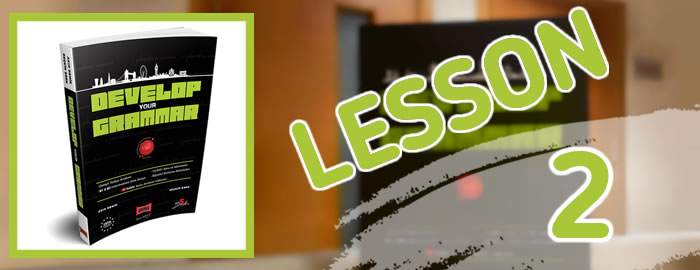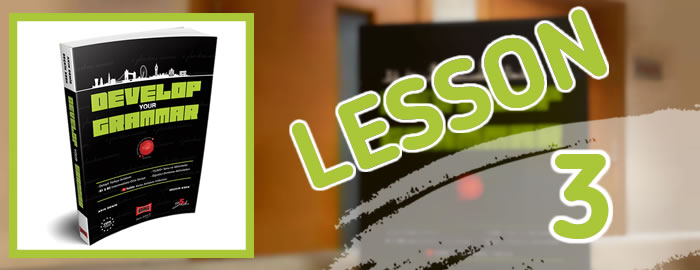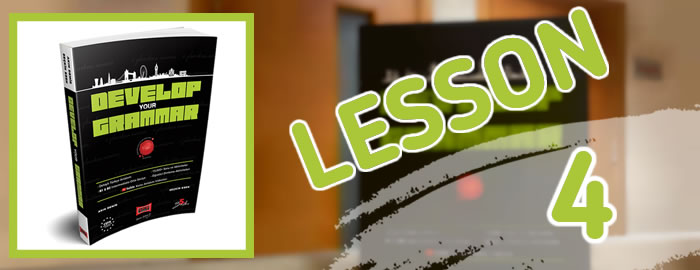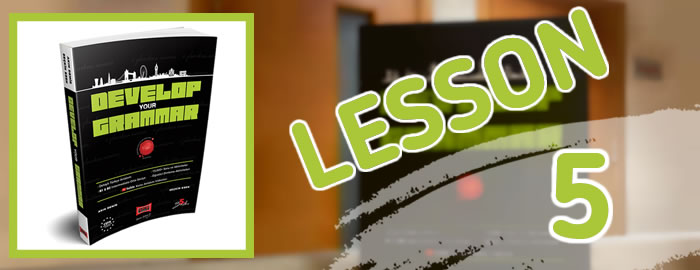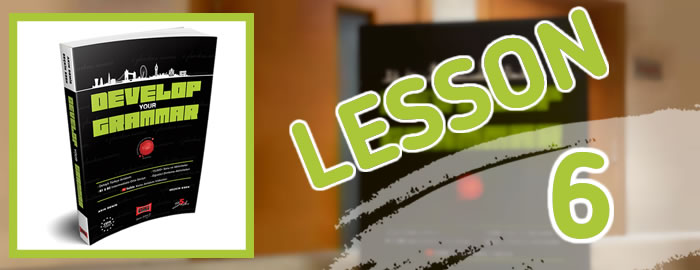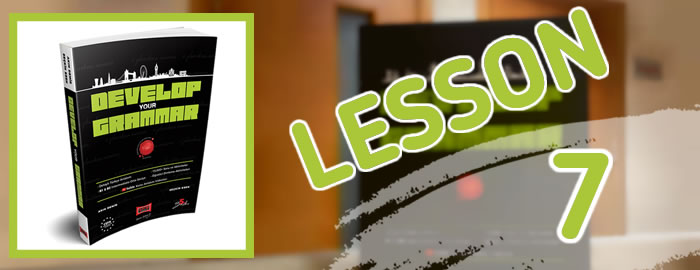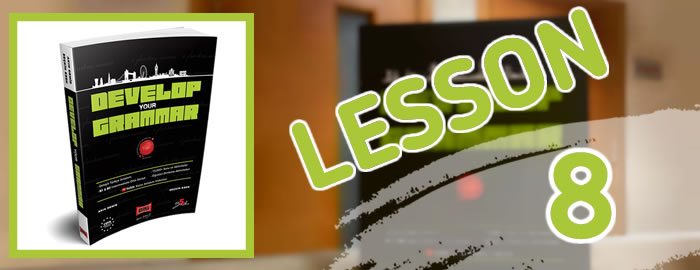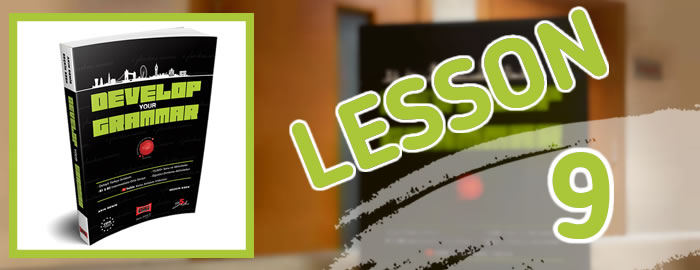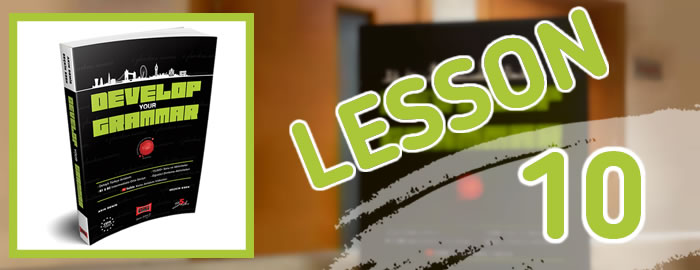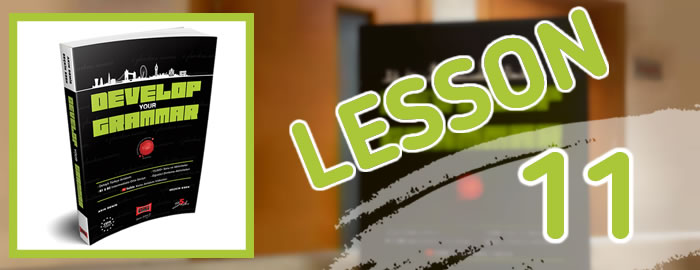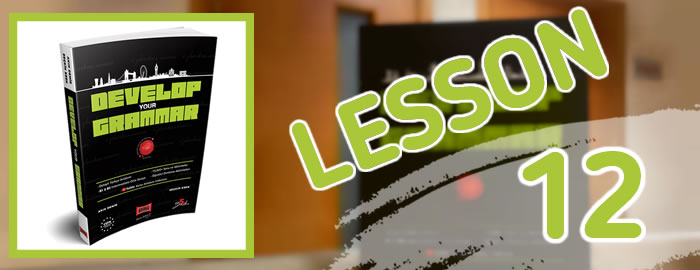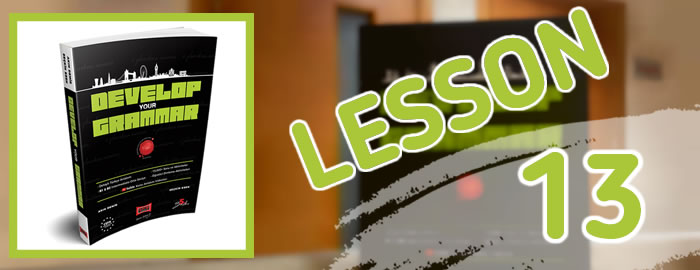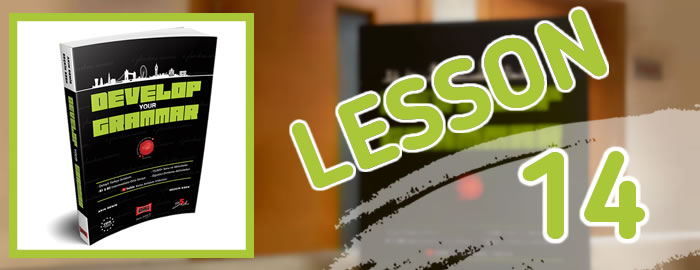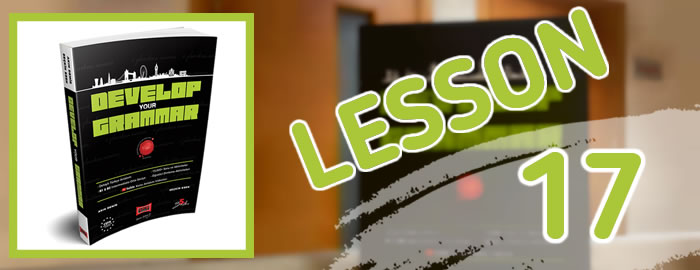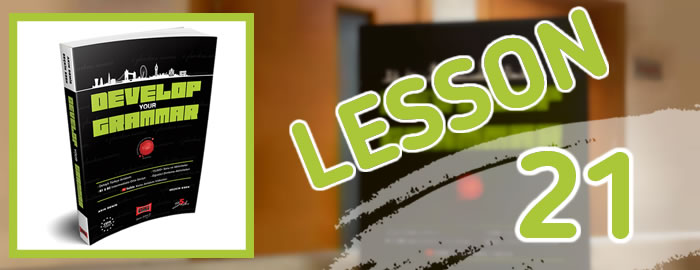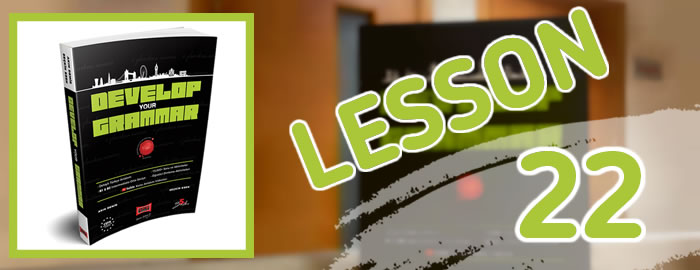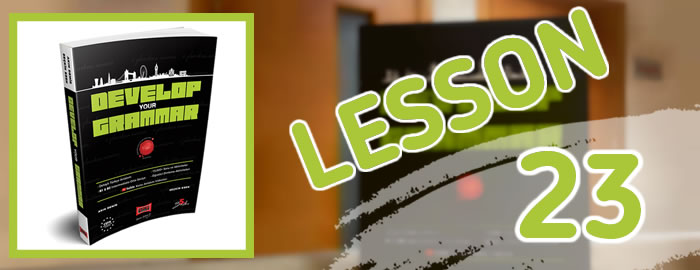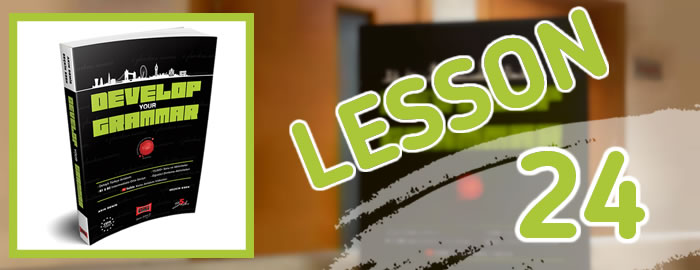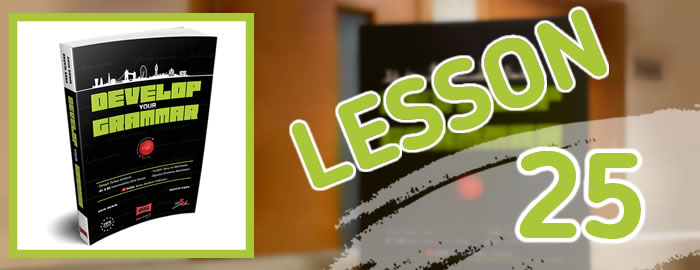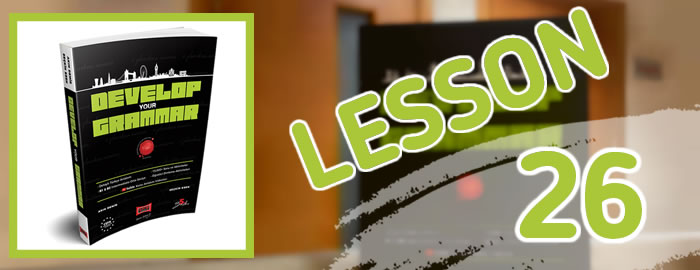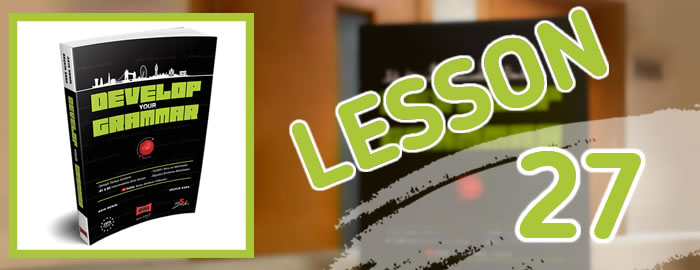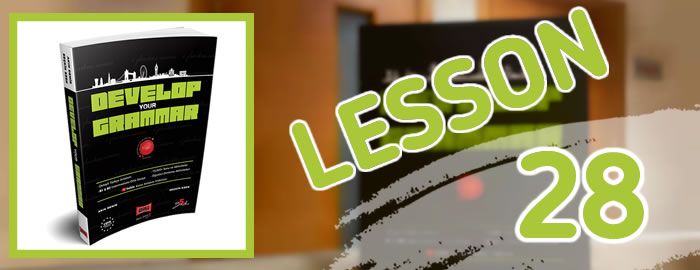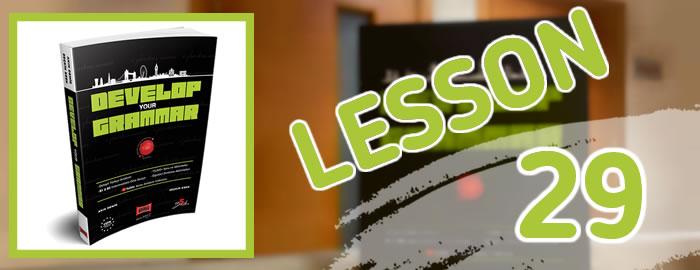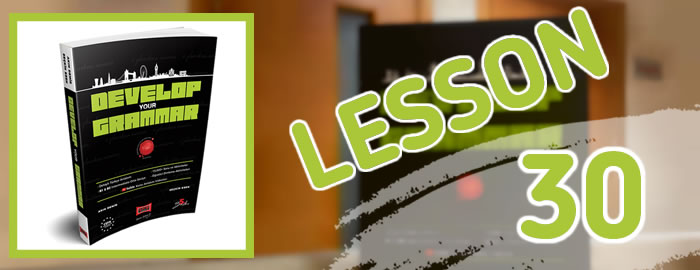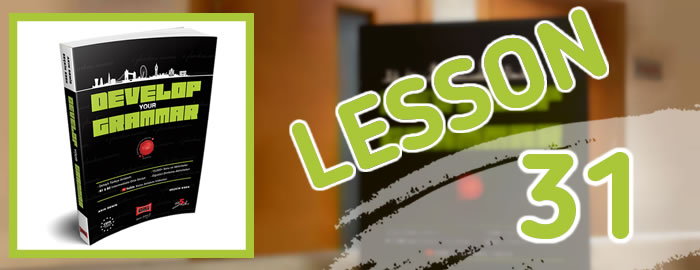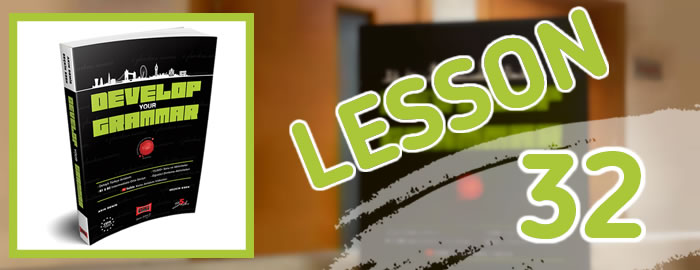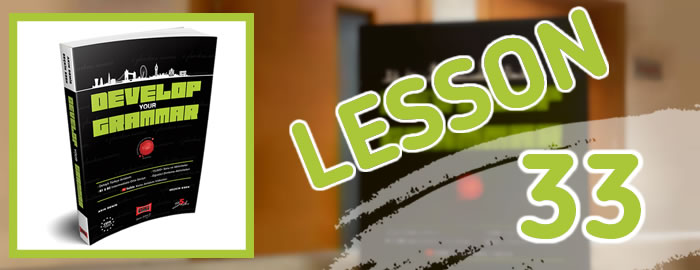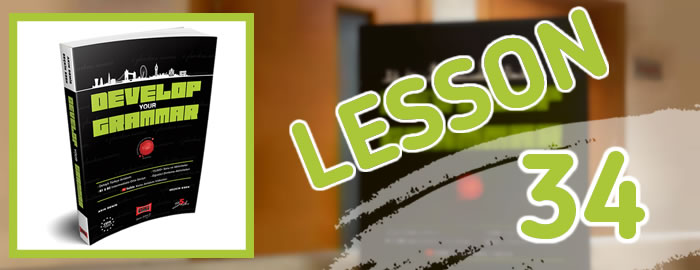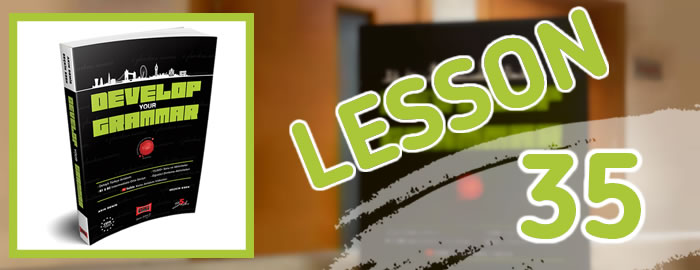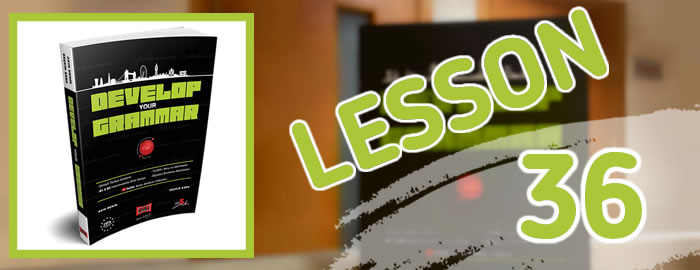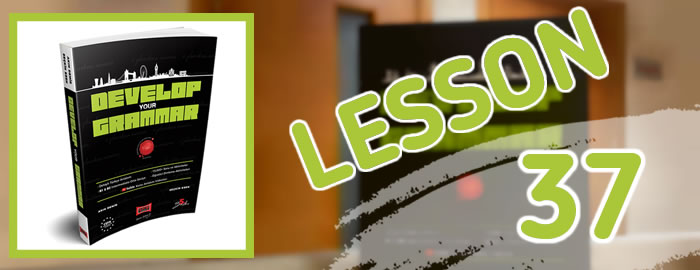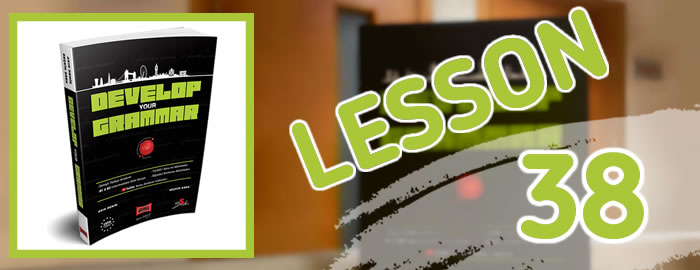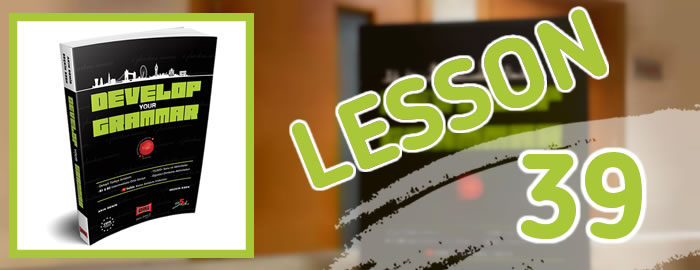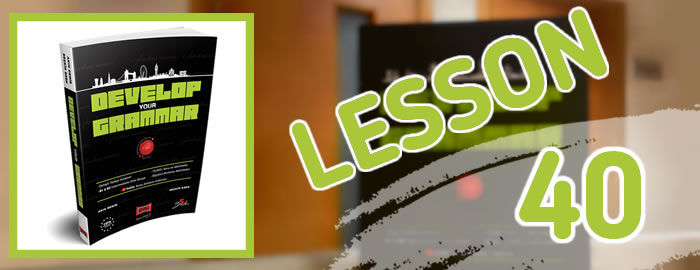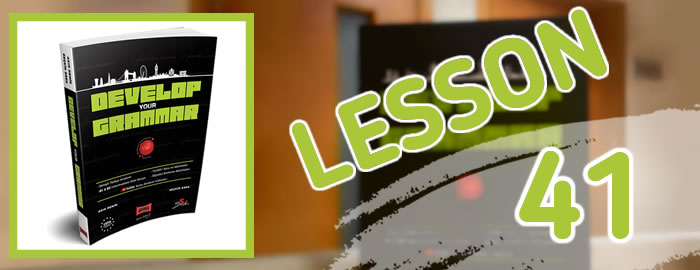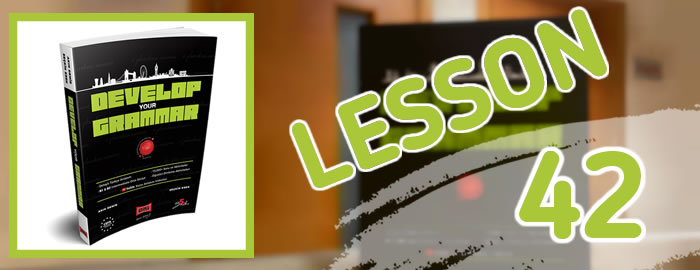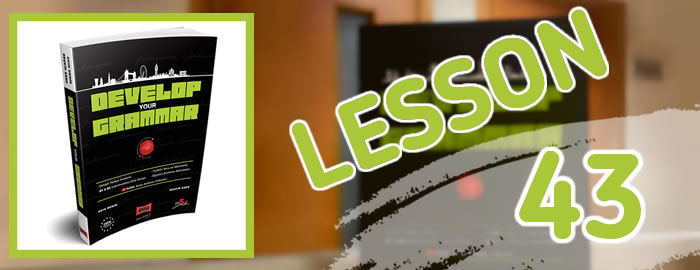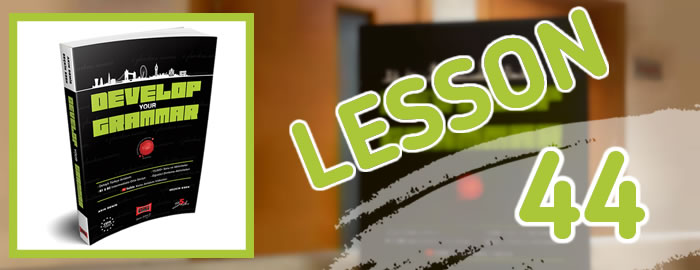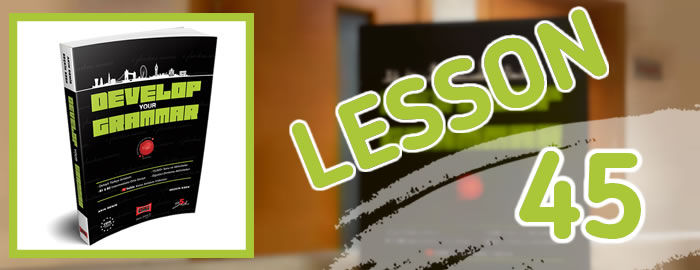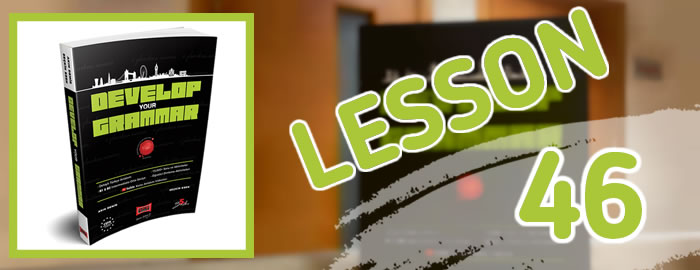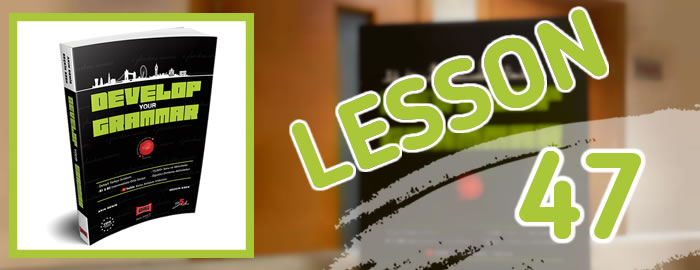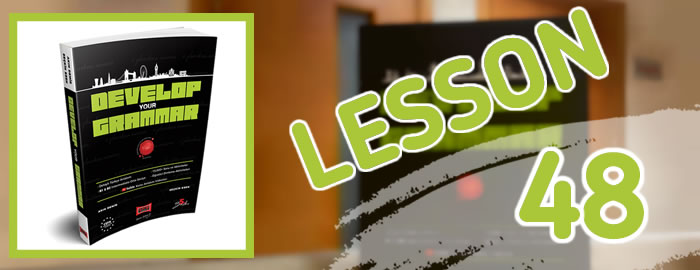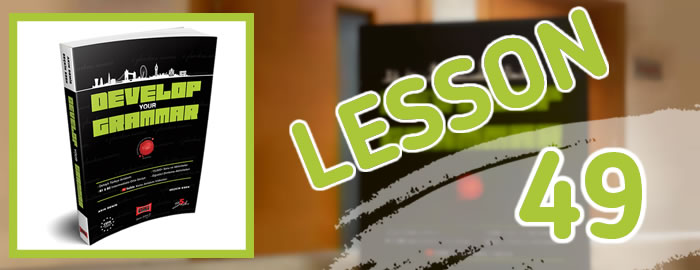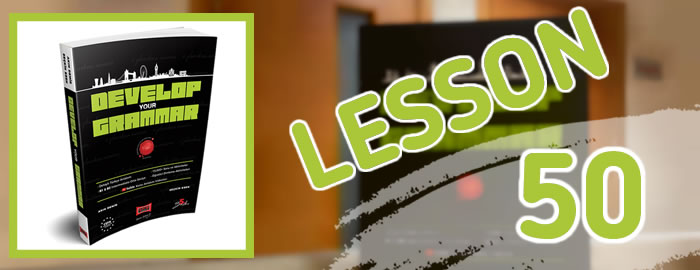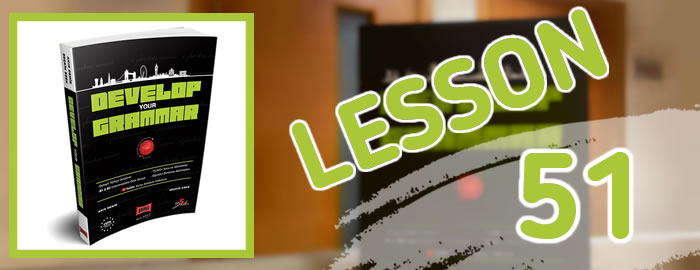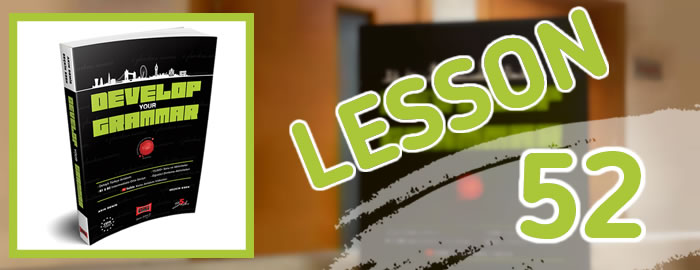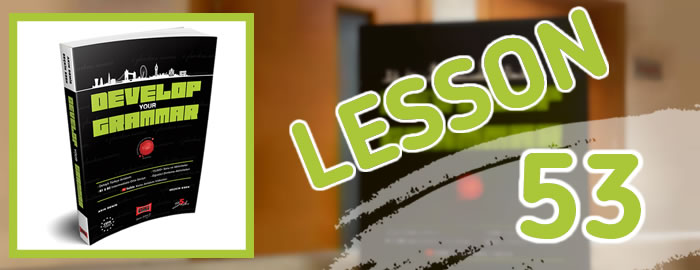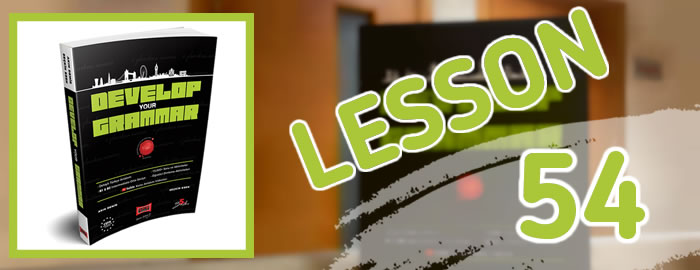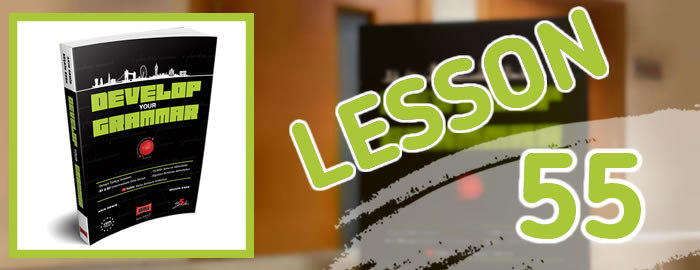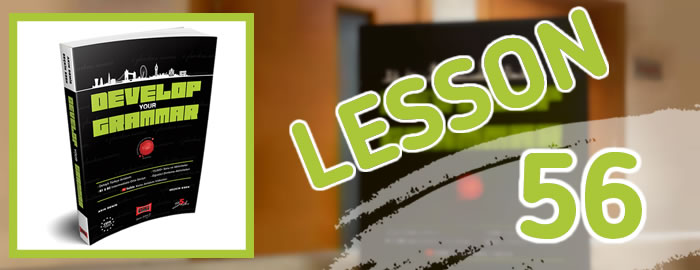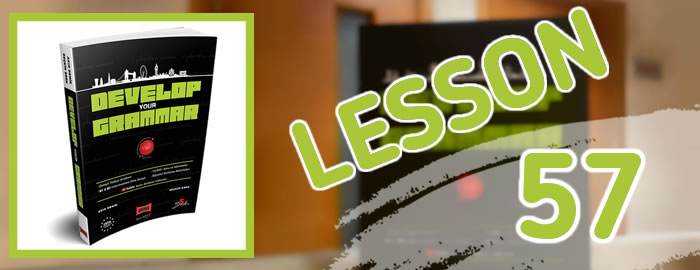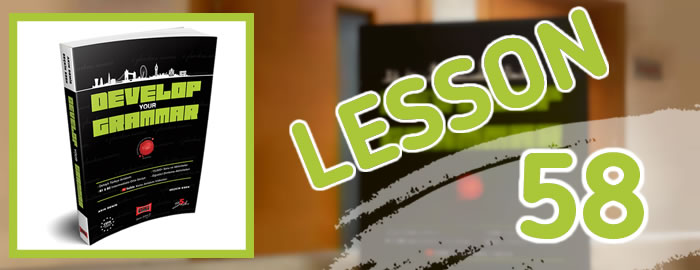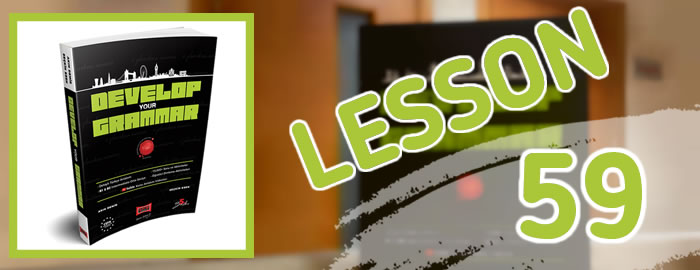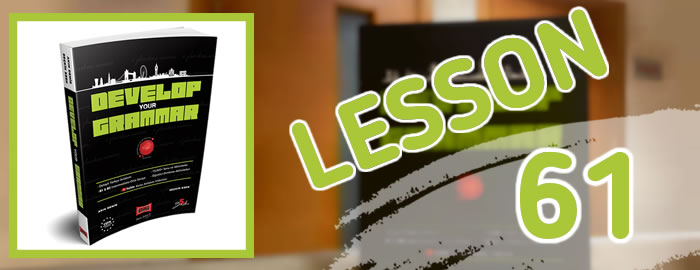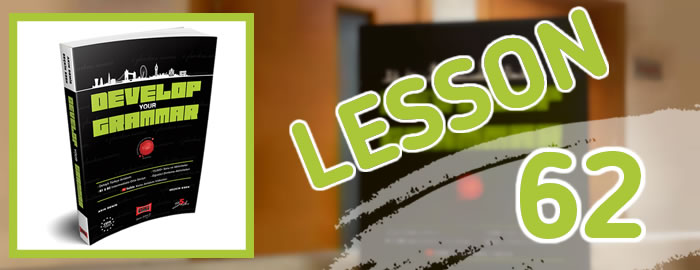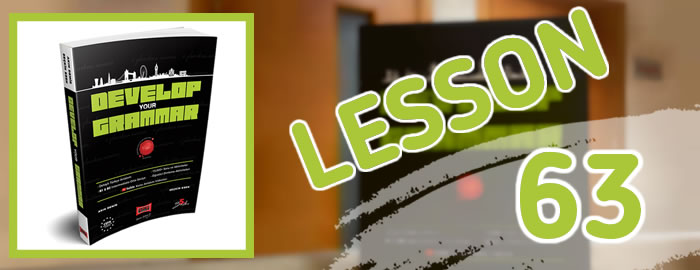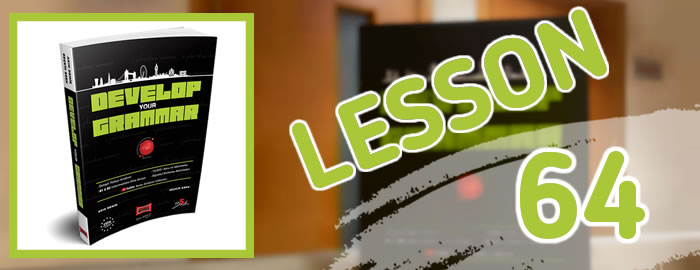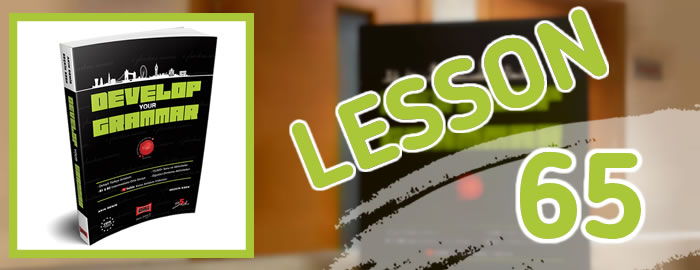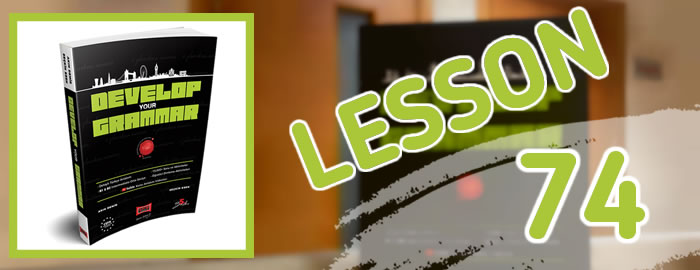Lesson 1: Simple Present Tense
The Present Simple is often used to describe actions that are continuous, habitual or express universal truths. You can access our full course on the Udemy platform.
WATCH THE LESSONLesson 2: Present Continuous Tense
The Present Continuous Tense is used to express current or temporary situations. It is also used to describe planned events in the future. You can access the full course on the Udemy platform.
WATCH THE LESSONLesson 3: Frequency Adverbs
Adverbs of frequency are used to indicate how often an action is done. Usually, these adverbs appear before the verb in the sentence. You can access the full course on the Udemy platform.
WATCH THE LESSONLesson 4: Stative and Non-Stative Verbs
State verbs describe a state or condition rather than an action. They usually relate to thoughts, feelings, emotions, relationships, sensations, states of being and measurements. Non-stative verbs describe actions, activities, or processes that have a definite beginning and end. You can find the full course on the Udemy platform.
WATCH THE LESSONLesson 5: Simple Past Tense
Simple Past Tense is used to express actions or situations that took place at a specific time in the past. It is a tense form used in English for actions that have begun and completed in the past. You can access our full course on the Udemy platform.
WATCH THE LESSONLesson 6: Past Continuous Tense
Past Continuous Tense is used to describe actions that are ongoing at a specific moment in the past. This tense emphasizes an action that lasted before another event occurred. You can access our full course on the Udemy platform.
WATCH THE LESSONLesson 7: Present Perfect Tense
Present Perfect Tense, geçmişte tamamlanmış olan fakat şu anla bir ilgisi veya etkisi bulunan eylemleri tanımlamak için kullanılır. Geçmişle şimdiki zamanı birbirine bağlar. Kursumuzun tamamına Udemy platformundan ulaşabilirsiniz.
WATCH THE LESSONLesson 8: Present Perfect Continuous Tense
The Present Perfect Continuous Tense is used to describe actions or situations that have started in the past and are still going on in the present or have just finished. This tense emphasizes the duration or ongoing nature of the action and establishes a link between the past and the present. You can find our full course on the Udemy platform.
WATCH THE LESSONLesson 9: Past Perfect Tense
Past Perfect Tense is used to express that an action in the past took place and was completed before another action. It emphasizes the sequence of events in the past. You can access our full course on the Udemy platform.
WATCH THE LESSONLesson 10: Past Perfect Continuous Tense
The Past Perfect Continuous Tense is used to express actions that have continued and been completed up to a certain time in the past. This tense is used to emphasize how long an action has been going on and indicates that it was completed before a certain point in time. You can access our full course on the Udemy platform.
WATCH THE LESSONLesson 11: Future Time
The future tense is used to describe events, situations or actions that will take place in the future. In English, various structures and tenses are used to express the future. You can access our full course on the Udemy platform.
WATCH THE LESSONLesson 12: Expressing The Future In Time Clauses
Time clauses are parts of sentences that give information about when something happens. They usually start with time conjunctions like when, after, before, as soon as, until, and while. You can access our full course on the Udemy platform.
WATCH THE LESSONLesson 13: Future Continuous Tense
The Future Continuous Tense is used to describe actions that will be happening at a specific time in the future. You can access our full course on the Udemy platform.
WATCH THE LESSONLesson 14: Future Perfect Simple - Future Perfect Continuous
The Future Perfect Simple tense is used to describe actions that will be completed before a specific point in the future. In addition, The Future Perfect Continuous tense is used to describe actions that will have been happening up until a specific point in the future. These actions may still be ongoing at that future time or may have just ended. You can access our full course on the Udemy platform.
WATCH THE LESSONLesson 15: Yes/No Questions and Information Questions
Yes/No Questions and Information Questions are essential in English for gathering information and making conversations. Yes/No Questions seek simple affirmative or negative responses, while Information Questions require detailed answers, offering more context and specifics. You can access our full course on the Udemy platform.
WATCH THE LESSONLesson 16: Using Which, What kind of and Whose
"Which," "What kind of," and "Whose" are question words used to obtain specific information. "Which" helps in choosing from defined options, "What kind of" identifies the type or category, and "Whose" reveals ownership or possession. You can access our full course on the Udemy platform.
WATCH THE LESSONLesson 17: Using How, How often, How far and How long
"How," "How often," "How far," and "How long" are useful question words for gathering detailed information. "How" inquires about methods or conditions, "How often" asks about frequency, "How far" measures distance, and "How long" determines duration. You can access our full course on the Udemy platform.
WATCH THE LESSONLesson 18: Using How About and What About
"How about" and "What about" are expressions used to make suggestions and seek additional information. "How about" is used for proposing ideas or asking for opinions on a suggestion, while "What about" is used to raise additional points or inquire about details that might not have been considered. You can access our full course on the Udemy platform.
WATCH THE LESSONLesson 19: Tag Questions
Tag Questions are short questions added to the end of a statement to confirm or check information. They are used to seek agreement or to ensure that the listener shares the same view. You can access our full course on the Udemy platform.
WATCH THE LESSONLesson 20: Personal Pronouns
Personal Pronouns are words used to refer to specific people or things and are essential for identifying the speaker, the listener, and others in a conversation. You can access our full course on the Udemy platform.
WATCH THE LESSONLesson 21: Indefinite Nouns, General Nouns, Collective Nouns
Indefinite nouns, common nouns and collective nouns are important grammar rules used to describe non-specific objects, general categories and groups in English. The full course is available on Udemy.
WATCH THE LESSONLesson 22: Forms of Other
The words 'other,' 'another,' 'others,' 'the other,' and 'the others' are used in English to describe different groups and individuals, and understanding their correct usage helps improve language skills. The full course is available on Udemy.
WATCH THE LESSONLesson 23: Common Expressions with Other
Common expressions with "other" help in expressing relationships, times, and contrasting viewpoints, and understanding them makes it easier to use the language naturally and effectively. The full course is available on Udemy.
WATCH THE LESSONLesson 24: Subject - Verb Agreement
In English, subject-verb agreement is crucial for clear and correct sentences, as singular subjects use singular verbs and plural subjects use plural verbs. The full course is available on Udemy.
WATCH THE LESSONLesson 25: Regular and Irregular Plural Nouns
Regular plural nouns follow a specific rule by adding '-s' or '-es', while irregular plural nouns have unique forms that often need to be memorized. The full course is available on Udemy.
WATCH THE LESSONLesson 26: Possessive Nouns and Nouns Used as Adjectives
While possessive nouns indicate who owns something, nouns used as adjectives are used to describe other nouns and are placed before them. The full course is available on Udemy.
WATCH THE LESSONLesson 27: Countable and Uncountable Nouns
In English, nouns are divided into countable and uncountable nouns; countable nouns are used in singular and plural form, while uncountable nouns are usually in singular form and are measured in quantity. The full course is available on Udemy.
WATCH THE LESSONLesson 28: Basic Article Usage
In English, articles are used to indicate whether nouns are definite or indefinite, and their correct use will help make your sentences clearer and more understandable. The full course is available on Udemy.
WATCH THE LESSONLesson 29: Quantity with Countable and Uncountable Nouns
Countable and Uncountable Nouns refer to objects in English that follow different rules when expressing quantity. You can access our full course on the Udemy platform.
WATCH THE LESSONLesson 30: Using Few, A Few, Little and A Little
“Few” and ‘a few’ are used with countable nouns, while ‘little’ and ‘a little’ are used with uncountable nouns. You can access the full course on the Udemy platform.
WATCH THE LESSONLesson 31: Expressing Ability with Can, Could and Be able to
Can, Could and Be able to are used to express ability. We use them to express current and past abilities. You can access the full course on the Udemy platform.
WATCH THE LESSONLesson 32: Using May, Might, Maybe, Can, Could
Using May, Might, Maybe, Can, and Could involves understanding how these modal verbs and adverbs are used to express possibility, ability, and permission. You can access the full course on the Udemy platform.
WATCH THE LESSONLesson 33: Polite Requests
In English, can, could, will and would are used to form polite request sentences. You can access the full course on the Udemy platform.
WATCH THE LESSONLesson 34: Expressing Advice (Should, Ought to, Had Better)
In English, should, ought to and had better are used when giving advice. You can access the full course on the Udemy platform.
WATCH THE LESSONLesson 35: Expressing Necessity (Must, Have to, Have got to)
We can express obligations using “must,” “have to,” and “have got to.” You can access the full course on the Udemy platform.
WATCH THE LESSONLesson 36: The Past Form of Should
The Past Form of Should involves understanding how to express advice or recommendations in the past. You can access the full course on the Udemy platform.
WATCH THE LESSONLesson 37: Using Be Supposed To and Was/Were Going To
Be Supposed To and Was/Were Going To can be used to form sentences about plans, intentions and expectations in English. You can access the full course on the Udemy platform.
WATCH THE LESSONLesson 38: Imperative Sentences
Imperative sentences are used to give commands, make requests, offer invitations, or provide instructions. These sentences usually have no subject because the subject is understood to be "you." You can access the full course on the Udemy platform.
WATCH THE LESSONLesson 39: Let's Why don't, Shall, Should and Could
Let's Why don't, Shall, Should and Could are used to make suggestions, recommendations or advice. You can access the full course on the Udemy platform.
WATCH THE LESSONLesson 40: Prefer, Like...better and Would rather
Prefer, Like...better and Would rather are used to express a preference for one thing over another or to indicate what you like better. You can access the full course on the Udemy platform.
WATCH THE LESSONLesson 41: Repeated Actions in the Past - Would and Used to
"Would" and "Used to" are both used to describe repeated actions or habits in the past. You can access our full course on the Udemy platform.
WATCH THE LESSONLesson 42: Degrees of Certainty
Degrees of certainty refer to how sure or uncertain we are about something. We use different modal verbs and phrases to express varying levels of certainty. You can access our full course on the Udemy platform.
WATCH THE LESSONLesson 43: Progressive Forms of Modals and Combining Modals
Modals help us express ability, possibility, permission, necessity, and more. Progressive forms indicate an action that is in progress. We form the progressive forms of modals using the structure: modal + be + verb-ing. You can access our full course on the Udemy platform.
WATCH THE LESSONLesson 44: The Passive
The passive voice is used when we want to focus on the action or the object of the action rather than the subject performing the action. The passive voice is formed by using the verb "to be" + past participle of the main verb. The tense of the verb "to be" changes according to the tense of the sentence. You can access our full course on the Udemy platform.
WATCH THE LESSONLesson 45: The Passive Form of Modals and Phrasal Modals
In passive voice with modals, we use the structure: modal + be + past participle. This allows us to express actions where the focus is on the action or the receiver of the action, rather than who performs it. You can access our full course on the Udemy platform.
WATCH THE LESSONLesson 46: Using Past Participles as Adjectives
Past participles can be used as adjectives to describe or modify nouns. When used in this way, they express the result or effect of an action. You can access our full course on the Udemy platform.
WATCH THE LESSONLesson 47: The Passive with Get
The passive voice with "get" is an alternative to using "be" in passive sentences. It is more informal and often used in spoken English. It typically implies that the action is unexpected or involves a change of state. You can access our full course on the Udemy platform.
WATCH THE LESSONLesson 48: Participle Adjectives
Participle adjectives are adjectives formed from verbs. They can describe how someone feels (emotions) or the characteristics of things. You can access our full course on the Udemy platform.
WATCH THE LESSONLesson 49: Noun Clauses with Question Words, If and Whether
Noun clauses can act as the subject, object, or complement in a sentence. They often start with question words (like who, what, where, when, why, how) or the words "if" and "whether." You can access our full course on the Udemy platform.
WATCH THE LESSONLesson 50: Noun Clauses with That
Noun clauses with "that" function as the subject, object, or complement in a sentence. These clauses provide additional information or elaborate on a statement. You can access our full course on the Udemy platform.
WATCH THE LESSONLesson 51: Reported Speech
Reported speech is used to relay what someone else has said without quoting them directly. It requires changes in tense, pronouns, and some time expressions. You can access our full course on the Udemy platform.
WATCH THE LESSONLesson 52: Relative Clauses (Adjective Clauses)
Relative clauses, also known as adjective clauses, describe or give more information about a noun in the main clause. They often start with relative pronouns like who, whom, whose, which, or that. You can access our full course on the Udemy platform.
WATCH THE LESSONLesson 53: Using Prepositions in Relative Clauses
Prepositions in relative clauses are used to show relationships between nouns and other elements in a sentence. Prepositions can appear either at the end of the relative clause or, in more formal contexts, at the beginning. You can access our full course on the Udemy platform.
WATCH THE LESSONLesson 54: Using Whose, Where and When in Relative Clauses
Whose, where, and when are relative pronouns used to add more information about a noun in a relative clause. Each of these pronouns serves a specific purpose. You can access our full course on the Udemy platform.
WATCH THE LESSONLesson 55: Defining and Non-Defining Relative Clauses
Relative clauses give additional information about a noun. They can be defining or non-defining, and the choice affects how the information is presented. You can access our full course on the Udemy platform.
WATCH THE LESSONLesson 56: Reduction of Relative Clauses (Adjective Clauses)
Reduction of relative clauses simplifies sentences by removing the relative pronoun and/or auxiliary verb. This makes sentences shorter and more concise. You can access our full course on the Udemy platform.
WATCH THE LESSONLesson 57: Comparison - Same, Similar, Different, Like, Alike
When comparing things or people, we use specific words to describe their relationships or differences. We form these comparison sentences with the words Same, Similar, Different, Like, Alike. You can access our full course on the Udemy platform.
WATCH THE LESSONLesson 58: Comparisons with As ... As
The "As ... as" structure is used to show that two things or people are equal in a certain quality or characteristic. It emphasizes that there is no difference in the degree of the quality being compared. You can access our full course on the Udemy platform.
WATCH THE LESSONLesson 59: Comparatives and Superlatives
Comparatives and superlatives are used to compare things and express degrees of difference or superiority. You can access our full course on the Udemy platform.
WATCH THE LESSONLesson 60: Repeating a Comparative and Double Comparatives
Repeating a Comparative and Double Comparatives are structures used to show increasing or decreasing degrees of a quality, or to compare two related changes. You can access our full course on the Udemy platform.
WATCH THE LESSONLesson 61: Using Adverb Clauses to Show Time Relationship
Adverb clauses are dependent clauses that act like adverbs, providing information about when something happens. They often describe the time relationship between two actions or events in a sentence. You can access our full course on the Udemy platform.
WATCH THE LESSONLesson 62: Using Adverb Clauses to Show Cause and Effect
Adverb clauses that show cause and effect explain why something happens (cause) and what happens as a result (effect). These clauses connect two ideas by indicating that one event is the reason for another. You can access our full course on the Udemy platform.
WATCH THE LESSONLesson 63: Using Adverb Clauses to Express Contrast
Adverb clauses that express contrast show a difference or contradiction between two ideas or actions. These clauses help to highlight how one action or situation contrasts with another. You can access our full course on the Udemy platform.
WATCH THE LESSONLesson 64: Conditions in Adverb Clauses
Adverb clauses that express conditions describe a situation or requirement that must be met for something else to happen. They show the relationship between an action and the condition under which it occurs. You can access our full course on the Udemy platform.
WATCH THE LESSONLesson 65: Reduction of Adverb Clauses
Reduction of adverb clauses involves simplifying these clauses to make sentences shorter and more concise. This is done by removing some parts of the clause while retaining its meaning. You can access our full course on the Udemy platform.
WATCH THE LESSONLesson 66: Because of, Due to, Therefore, Consequently, So
Because of and Due to are used to express reasons, while Therefore, Consequently, and So are used to show results. You can access our full course on the Udemy platform.
WATCH THE LESSONLesson 67: Using So That and Such That
"So that" and "such that" are used to express purpose or result in sentences, showing the reason or the effect of an action. You can access our full course on the Udemy platform.
WATCH THE LESSONLesson 68: Showing Contrast
Showing contrast means highlighting differences between two or more things. It is used to point out how things are different from each other. You can access our full course on the Udemy platform.
WATCH THE LESSONLesson 69: Using Otherwise and Or Else
"Otherwise" and "or else" are used to present alternatives or consequences if a certain condition is not met. You can access our full course on the Udemy platform.
WATCH THE LESSONLesson 70: Both/and Not only/but also Either/or Neither/nor
Both/And means two things together; Not Only/But Also emphasizes two ideas and presents the second idea as an additional feature; Either/Or means choosing one of two alternatives; Neither/Nor means that neither option is valid. The full course is available on Udemy.
WATCH THE LESSONLesson 71: Conditionals (If Clauses)
Conditionals express situations where one event depends on another. The word "if" introduces these conditions. The full course is available on Udemy.
WATCH THE LESSONLesson 72: Mixed, Inverted and Implied Conditionals
Mixed Conditional Clauses connect past and present states, Inverted Conditional Clauses express the condition with alternative structures, and Implied Conditional Clauses imply conditions without using "if". You can access the full course on the Udemy platform.
WATCH THE LESSONLesson 73: Wish Clauses
Wish Clauses are used to express a desire for something that is not true or is not happening, or to express regret about past or present situations. You can access the full course on the Udemy platform.
WATCH THE LESSONLesson 74: Gerunds
Gerunds are verb forms that function as nouns and end in -ing. They are used to describe activities, actions, or things that are happening or are habitual. You can access the full course on the Udemy platform.
WATCH THE LESSONLesson 75: Infinitives
Lorem Ipsum is simply dummy text of the printing and typesetting industry.Lorem Ipsum is simply dummy text of the printing and typesetting industry.
WATCH THE LESSONLesson 76: Verbs Followed by Either Infinitives or Gerunds
Some verbs can be followed by either infinitives (to + base verb) or gerunds (verb + -ing), but the meaning can change depending on which form is used. You can access the full course on the Udemy platform.
WATCH THE LESSONLesson 77: Other Uses of Gerunds and Infinitives
Gerunds and infinitives can be used in various ways in sentences beyond the basic functions. You can access the full course on the Udemy platform.
WATCH THE LESSON